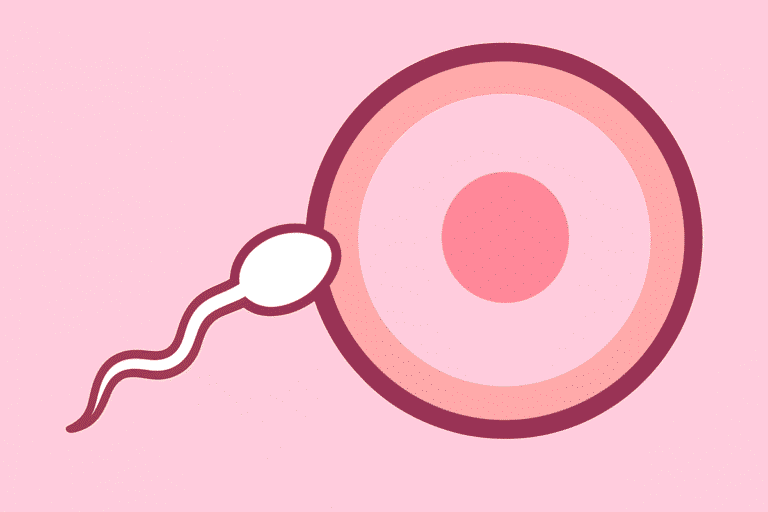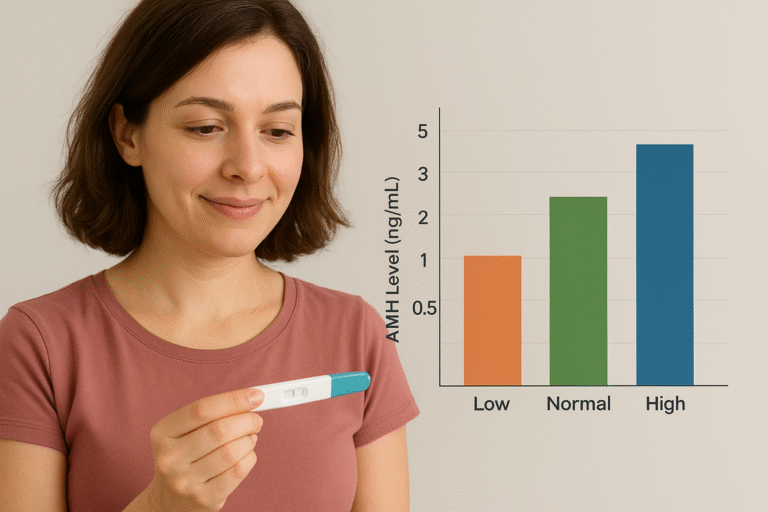Usually starting in a woman’s 40s, perimenopause is the normal progression towards menopause; others may see changes as early as their mid-30s. Ranging from four to ten years, this period is marked by changing hormone levels, mostly estrogen and progesterone that cause various physical and mental problems. Unlike menopause, which is defined as 12 consecutive months without a period, perimenopause indicates you’re still ovulating, although sporadically, and conception remains possible. Often misinterpreting them for stress or other health concerns, many women are caught off guard by symptoms such as unexpected hot flashes, mood changes, or unexplained weight increase. The first step in properly managing these changes and preserving quality of life throughout this transition is to grasp them.
Understanding Hormonal Fluctuations: The Root Cause of Symptoms
Perimenopause symptoms are mostly caused by the irregular production and drop of estrogen and progesterone. These hormones control mood, metabolism, bone density, cardiovascular health, and not just reproduction. Estrogen levels fluctuate erratically when ovarian function declines—sometimes rising (producing severe periods or breast discomfort) and other times falling (causing hot flashes or vaginal dryness). Often causing erratic periods, progesterone, which stabilizes the uterine lining, also declines. These hormonal changes affect almost every bodily system, thereby explaining why symptoms could seem so common and disruptive.
Also Read : Does Birth Control Pills Will Cause Infertility?
Comprehensive List of Perimenopause Symptoms (And Their Causes)
1. Irregular Menstrual Cycles
Among the first symptoms, periods could become shorter, longer, heavier, or lighter. Some women have 60 day long periods or 21-day short cycles. Anovulatory cycles when ovulation doesn’t happen or delayed follicle growth cause this uncertainty. Tracking your cycle with apps or notebooks might help to highlight trends.
2. Hot Flashes and Night Sweats
Often with perspiration and redness, up to 75% of women have unexpected, severe heat spikes. Estrogen’s influence on the hypothalamus, the body’s thermostat, causes this to happen. Among the triggers include stress, alcohol, and coffee. Cooling techniques include wearing moisture-wicking sheets and layering clothes.
3. Mood Swings, Anxiety, and Depression
Estrogen affects serotonin and dopamine synthesis; so, its drop could cause anger, crying, or even panic episodes. Women with a history of PMS or postpartum depression are particularly vulnerable. Regular exercise, omega-3 fatty acids, and cognitive behavioral therapy (CBT) might help to stabilize mood.
4. Sleep Disturbances
Night sweats, cortisol increases, or reduced melatonin make falling or staying asleep more difficult. Lack of sleep makes other problems like irritation and cognitive fog worse. Giving sleep hygiene first priority cool room temperatures, no electronics before bed, and magnesium supplements can help one to slumber better.
5. Vaginal and Bladder Changes
Reduced estrogen thins vaginal tissues, causing dryness, itching, or discomfort during intercourse. It also compromises the urinary system, hence raising UTI risk. Pelvic floor exercises, vaginal moisturizers, and water-based lubricants provide comfort.
6. Cognitive Changes (“Brain Fog”)
Common are forgetfulness, trouble focusing, and “tip-of-the-tongue” experiences. Estrogen helps the brain connect, so its drop influences memory. Sufficient sleep, mindfulness, and puzzles might help to improve concentration.
7. Weight Gain and Slowed Metabolism
Insulin resistance and muscle loss cause many women to gain 5–10 pounds, especially around the belly. Reducing refined sugars, a high-protein diet, and strength exercise may help to offset this.
8. Hair and Skin Changes
Hormonal imbalances cause thinning hair, dry skin, and adult acne. In the first five years after menopause, collagen synthesis declines by 30%. Retinoids, hyaluronic acid, and biotin help to offset these consequences.
Management Strategies: Lifestyle, Diet, and Medical Options
1. Hormonal Treatment
Hot flashes, bone loss, and vaginal dryness may all be reduced with low-dose estrogen—via patches, tablets, or creams. Women with a uterus are given progesterone to avoid endometrial cancer.
2. Non-Hormonal Medications
- Mood swings: SSRIs/SNRIs (e.g. paroxetine).
- Gabapentin to treat night sweats.
- Vaginal dryness treated with ospemifene
3. Organic Solutions
- Phytoestrogens: Lentils, flaxseeds, and soy imitate weak estrogen.
- Black cohosh: Evidence is varied, but it could lessen hot flashes.
- Acupuncture: Research indicates acupuncture lowers symptom severity.
4. Lifestyle Adjustments
- Exercise: Daily aerobics with weight training upto 30 minutes.
- Stress reduction: Deep-breathing techniques, meditation, or yoga help to reduce stress.
- Diet: Mediterranean-style eating—rich in vegetables, seafood, and olive oil.
Conclusion:
Though it might be a changing time, perimenopause doesn’t have to sap your energy. You may negotiate this change with certainty by early identification of symptoms and use of proactive strategies whether medical, dietary, or lifestyle-related.





[…] Also Read: How To Identify Perimenopause […]
[…] Also Read: How To Identify Premenopause […]
[…] Also Read: How To Identify Symptoms of Perimenopause […]